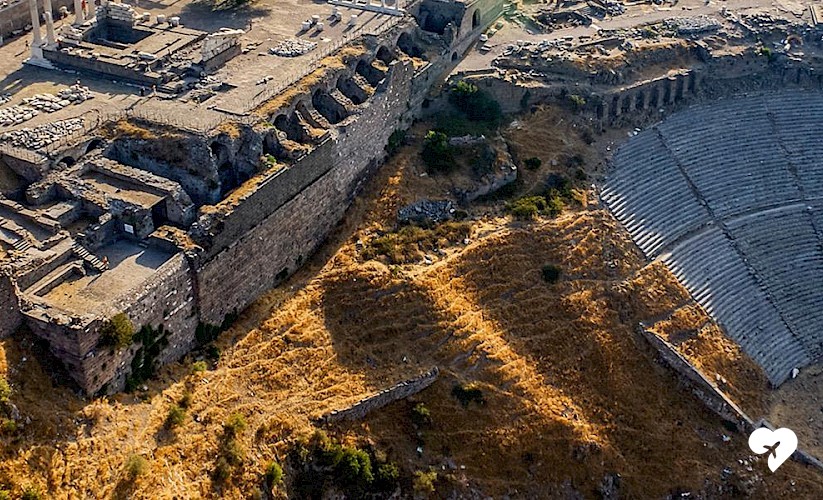Bergama is a city whose history dates back 8,500 years, and was made the world's 999th UNESCO World Heritage City in 2014. It was originally one of the most important and magnificent settlements of the Hellenistic period in the 7th century B.C.. There are Ionian, Hellenic, Roman and Byzantine remains here and has been a center of learning, health, culture and art for literally millennia.
The name of the modern city is derived from its ancient name of Pergamon, which means castle or Fortification.

The Theater & Fair Culture of Bergama
This Kermes in 1937 brought people from all over the country to Bergama. The Kermes festival in which goods were sold with the proceeds going to charity became a critical part of the culture, folklore and tourism for the city. In the 1940s, the healing temple of the "Asclepeion" was turned into a theater.
The Bergama Kermes lasts one week and is held every year during the Spring. In 2018, the Bergama International Theater Festival was held for the first time, including in the ancient theater of Pergamon and in squares all around the city center.
On April 23rd, which in Turkey is celebrated as National Sovereignty and Children's Day, the International Bergama Children's Festival is held, and has been so for 22 years.

The Ancient City of Pergamon
The ancient ruins of the city of Pergamon date back to the 8th century B.C. It was the capital of the Kingdom of Pergamon between 282 and 133 B.C. This was the center of the Eastern Roman Empire before it eventually became Ephesus. During this period, the palace, the temple the theater, and many more massive buildings were constructed, most of which remain remarkably intact right up to the present day. Parchment paper was invented in Pergamon, and it was through this medium that literature (and religion) came to spread so quickly all around the world. Excavation into the ancient city began in the 1870s, and the most important parts of this incredible ancient city are teh Acropolis and the Asclepeion.

The Asclepeion: One of the world’s first hospitals
An asclepeion was the name given to a temple of healing during the period in which Pergamon was at its height. Patients would visit and receive healing, which was often more spiritual than physical though both were available.
The asclepeion of Pergamon was the first in the world to use drugs for anesthesia and one of the first with public health policies. There is an amphitheater located in the Pergamon asclepeion, which is rare for health centers of the period, and it seats up to 3,500 people. It's been recently restored and as a result allows people the viewing experience provided by a modern theater despite being almost 2,000 years old, so catching a show here is quite the experience! So try to catch a show here and see if your mind is healed at the same time, as this whole region was viewed as having therapeutic qualities.
